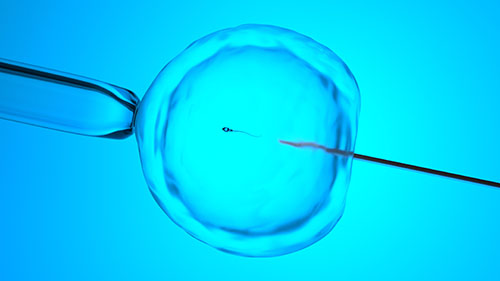Adapted from the writings of Dayan Yitzhak Grossman April 18, 2024 AP News reports: A…

Displaced Persons, Part II: Are Unimplanted Embryos People?
Adapted from the writings of Dayan Yitzhak Grossman
March 7, 2024
Our previous article cited a number of halachic authorities that permit the destruction of extrauterine embryos (embryos created in a petri dish that have not yet been implanted in a woman’s womb) and clearly do not consider them to have attained the status of human beings; in this article, we consider some more stringent perspectives.
R’ Shlomo Dichovsky adopts a very different perspective from that of the authorities we cited previously, in the context of a din Torah between an estranged husband and wife over the implantation into the wife of previously created embryos, which the wife apparently desired and the husband opposed.[1] While R’ Avraham Sherman and R’ Shlomo Ben Shimon sided with the husband based on various considerations, Rav Dichovsky sided with the wife. R’ Chaim Jachter summarizes Rav Dichovsky’s position as follows:
Rav Dichovsky, on the other hand, rules that the implantation should be permitted even absent the husband’s consent. He argues that once the egg has been fertilized, it attains a life of its own, and neither husband nor wife retains any ownership rights in the fertilized eggs. Rav Dichovsky asserts that therefore neither the husband nor the wife enjoys the right to destroy the preembryo…
Regarding the argument that it is better for such a child not to be born, Rav Dichovsky writes: “Just as no one would justify an abortion in such circumstances, so too no one should prevent the continued development of a fertilized egg.” He concludes: “In my opinion, also from a moral perspective, we do not enjoy the right to destroy a kernel of life, for whatever reason.”[2]
While Rav Dichovsky is discussing a case in which one spouse (the wife) did indeed wish to proceed with implantation, his arguments against allowing the destruction of extrauterine embryos would seem to apply even where neither spouse wished to proceed with implantation.
R’ Shmuel Wosner (the Sheivet Halevi) espouses a compromise position: In response to a question about whether Shabbos should be desecrated to save a test-tube embryo, he distinguishes between such an embryo and one that was already implanted in a womb, even within the first forty days following conception, at which point it is still considered “mere water.” Although we desecrate Shabbos to save an intrauterine embryo, that is because it is included in the rule that “most embryos are viable,” whereas no such presumption of viability exists for an extrauterine embryo whose development is still being monitored in the laboratory. Rav Wosner then adds a terse postscript:
And even if in the future things advance to the point that a large percentage of such attempts will be successful, nevertheless the inclination of the da’as Torah is as above.[3]
This author initially understood the postscript to mean that even if IVF technology improves, the halacha will not change, and we will still not desecrate Shabbos for a test-tube baby. R’ Yehuda Dovid Bleich, however, understands Rav Wosner to be saying precisely the opposite, that the halacha may indeed be different if the technology improves:
[Rav Wosner] expresses the opinion that Shabbos restrictions are not suspended for the preservation of a zygote that has not yet been implanted in the gestational mother, on the grounds that the vast majority of such zygotes are not viable, but adds the cautionary note that the empirical situation, and hence the halachic ruling, may change with advances in the development of reproductive knowledge and techniques. The clear implication of his position is that destruction of such nascent life cannot be countenanced.[4]
In any event, Rav Wosner’s position is that extrauterine embryos do not have the status of human beings, not because they are fundamentally not considered human before implantation, but because with then-current technology, the probability of their viability was relatively low, and (according to Rav Bleich’s understanding of his view) the status of extrauterine embryos with a high probability of viability may indeed be identical to that of intrauterine ones.
R’ Yitzchok Breitowitz considers whether Rav Wosner would go so far as to allow the destruction of extrauterine embryos:
If we understand this ruling to suggest that there are no affirmative obligations to sustain preembryo life, the surplus embryos may indeed be discarded with impunity for any reason. If, however, as is more likely, Rav Wosner’s ruling is limited to conflicts with other prohibitions, but in the absence of such conflict, there would indeed be an obligation to protect potential life, then one could not automatically assume the unlimited right to discard unwanted preembryos.[5]
[1]For a detailed analysis of various halachic approaches to resolving such disputes, see R’ Yitzchok A. Breitowitz, Halakhic Approaches to the Resolution of Disputes Concerning the Disposition of Preembryos, Tradition Issue 31.1 (Fall 1996) pp. 64-91 (and see also here).
[2]R’ Chaim Jachter, Frozen Preembryos—to Whom do they Belong? Kol Torah Volume 18, Halacha.
[3]Shu”t Sheivet Halevi cheilek 5 siman 47.
[4]R’ Yehuda Dovid Bleich, Survey of Recent Halakhic Periodical Literature: In Vitro Fertilization: Questions of Maternal Identity and Conversion, Tradition Issue 25.4 (Summer 1991) p. 97. For further discussion of the question of whether chillul Shabbos is permitted in order to save an extrauterine embryo, see Rav Zilberstein, Assia 51-52 (Iyar 5752) p. 56; R’ Chaim Dovid Halevi, Shu”t Mayim Chaim (Halevi) p. 247 (see here); R’ Mordechai Eliyahu, Hashmadas Beitziyos Mufaros Vedilul Ubarim, Techumin 11; R’ Re’eim Cohen, Hatzalas Ubarim (Beitziyos Mufaros) BeShabbos, Choveres Assia 105-06 pp. 43-56.
[5]R’ Yitzchok Breitowitz, The Preembryo in Halacha. See there for further discussion on the basic question of the permissibility of destroying extrauterine embryos.





